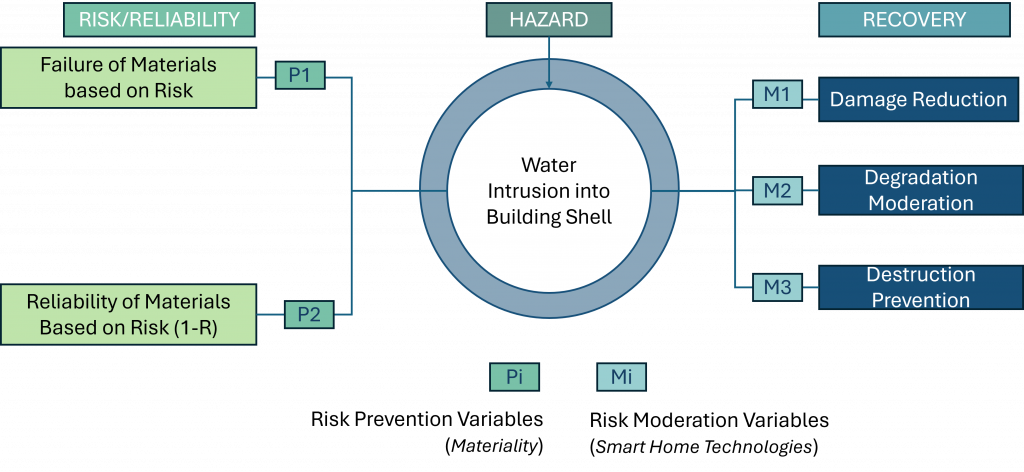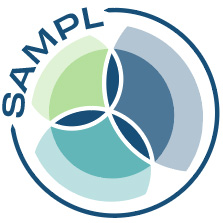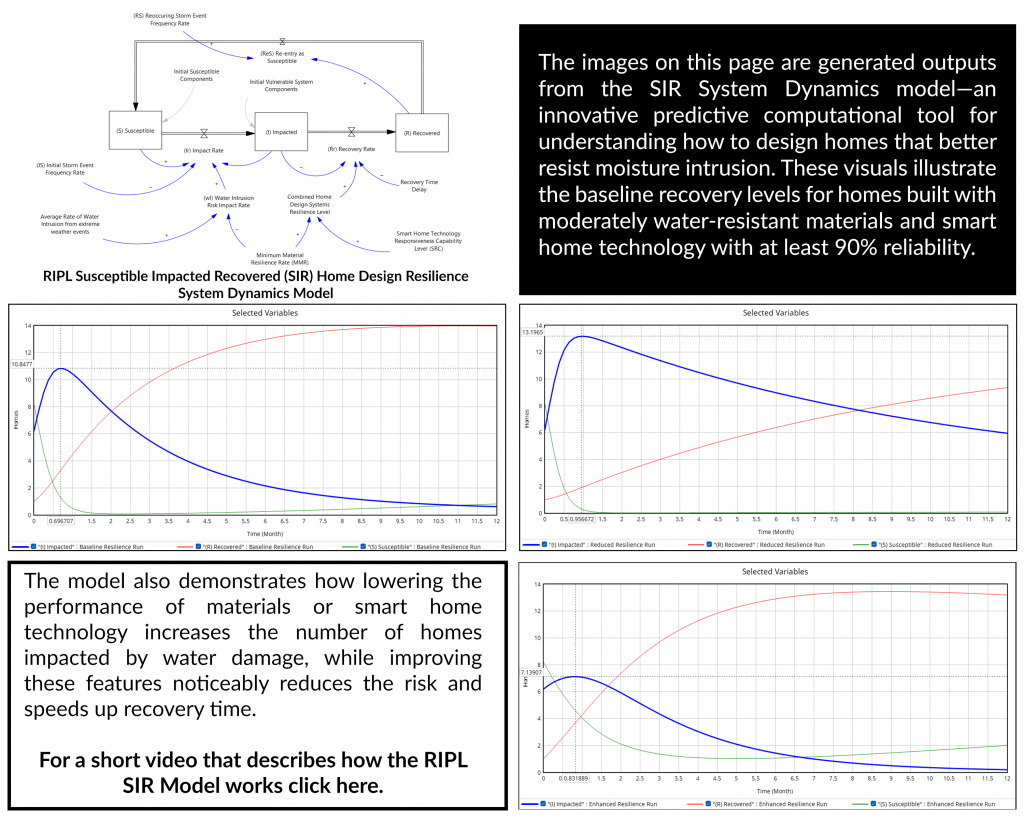This report on Enhancing Florida Built Environment Resilience was funded by the Florida Office of Insurance Regulation. The Resilience Inference Performance Level (RIPL) report and its resources offer a preliminary analysis of how building materials and smart home technologies can work together to improve the resilience of single-family homes against water intrusion hazards. The smart home technologies reviewed include systems for preventing water intrusion, enabling automatic utility shutoffs, and stabilizing foundations.
The primary objective of the RIPL report and resources is to assess the potential of materials, assemblies, and smart home technologies appropriate for residential construction to mitigate risk and reduce insurance losses for homeowners. Since insurance premiums are influenced by multiple factors, efforts to enhance resilience must be evaluated in the context of how these premiums are calculated. RIPL resources are designed to provide reliable decision support tools that support practical built environment resilience measures that may potentially lower homeowners’ insurance premiums.

Purpose
FIBER’s Resilience Inference Performance Level (RIPL) resources provide a comprehensive, systems-based framework for assessing and enhancing the resilience of residential buildings. Developed upon the Sustainable Adaptive Material Performance Level (SAMPL™) platform, RIPL identifies key preventive factors, particularly the selection and combination of building materials and finishes, that can substantially mitigate water intrusion risk due to natural hazards in residential construction. It further evaluates the strategic deployment of Smart Home Technologies, applying systems engineering principles adapted from safety-critical domains. Together, these resources enable Florida residents to make informed, evidence-based decisions aimed at improving the resilience and overall performance of their homes within the built environment.
Benefits & Features
RIPL offers several unique benefits that make it an essential resource for improving the resilience of homes. It connects risk-reducing and resilience-boosting strategies with potential insurance savings, giving homeowners practical reasons to adopt these measures. RIPL uses a clear, requirements-driven approach based on proven quality control and systems continuity practices, ensuring its recommendations are both thorough and relevant. By taking a holistic view, RIPL brings together material performance and smart technologies responsiveness capabilities into one comprehensive framework. With easy-to-use resources and clear, measurable performance metrics for building materials and smart home features, RIPL helps homeowners and builders make informed, data-driven decisions and continuously improve home resilience.
Risk Analysis Bowtie Model


Lisa Sundahl Platt, Ph.D.
Principal Investigator
Florida Institute for Built Environment Resilience (FIBER) Research Faculty
Assistant Professor
Interior Design
University of Florida

Jeff Carney
Co-Principal Investigator
Director, Florida Institute for Built Environment Resilience (FIBER)
Associate Professor
Architecture
University of Florida

Arezoo Zeinali
Graduate Research Assistant
FIBER Design Dynamics Lab GRA
Ph.D. Candidate
Interior Design
University of Florida

Lyndsey Weisman
Graduate Research Assistant
Masters Student
Architecture
University of Florida

Emma Hitchcock
Research Support Personnel
Undergraduate Student
Interior Design
University of Florida

Riley Barker
Research Support Personnel
Undergraduate Student
Architecture
University of Florida

Patricia Born, Ph.D.
Insurance Industry Subject Matter Expert and Contributor to RIPL Report
Midyette Eminent Scholar in Risk Management/Insurance
Risk Management/Insurance, Real Estate and Legal Studies
Florida State University
Introduction & Applications
The resilient design decision-support content on this site provides practical guidance for selecting resilient building materials. Materials are organized by key categories—foundation, framing, exterior materials, interior materials, and finishes (like flooring, paint, wallcoverings, and subflooring), and roofing—with thumbnail images and brief overviews highlighting important considerations for designing homes that better withstand hazards.
These resources offer a comprehensive selection of material options and evaluation criteria, enabling Florida residents to make informed, data-driven decisions tailored to their unique structural requirements—without imposing a one-size-fits-all approach.
SAMPL™
The Sustainable Adaptive Material Performance Level system (SAMPL™) is an innovative digital platform that helps users choose building materials based on real-world risks specific to their location. Unlike traditional databases, SAMPL offers an interactive experience where users can explore and compare how different materials perform under natural hazard scenarios. This data-driven approach empowers safer, more adaptable, and sustainable design decisions, ultimately improving housing health and safety. Currently being enhanced through ongoing research, SAMPL is built to guide smarter material choices and assess their impact on resilience, especially in environments where design quality is critical. More than just a rating tool, SAMPL acts as a comprehensive resource for design intelligence and risk management, ensuring every material choice supports healthier, safer, and more sustainable environments.

View Dashboard
Pricing Analytics & Relevance
Evaluating the cost-benefit of building and finish materials is critical for informed decisions—especially when selecting options that resist moisture intrusion from natural hazards. Comparing upfront costs with long-term savings helps shift the focus from immediate expenses to overall value.
High-performance, moisture-resistant materials can reduce structural damage, mold, and costly repairs after hurricanes or floods. They also help preserve property value, protect occupant health, and may lower insurance premiums and disruption-related costs.
Understanding the return on investment enables homeowners, builders, and developers to justify initial costs by quantifying avoided losses and increased durability. This supports more resilient, sustainable material choices that protect people and property in a changing climate.
View Dashboard
Resilient Design Resource Summaries
Click the images on this page to download one-page resources that provide helpful snapshots for understanding the application of RIPL tools and insights. These include:
- A case study on Moen’s smart water technologies
- A focused summary of how water intrusion impacts material performance
- An overview of smart home technologies for resilience
Fuzzy App
Fuzzy Inference Models support decision-making using rules that mimic human common-sense reasoning rather than relying on exact probabilities—which are often hard to determine in complex situations. This approach enables computers to interpret information described by performance levels, much like how people naturally assess situations. For example, a rule might state: “If the housing material resists moisture and smart home technologies respond effectively to water entry, then the home is resilient to moisture damage.” By applying fuzzy inference, RIPL can more accurately estimate moisture intrusion risk and evaluate a home’s resilience by considering the combined performance of building materials and smart technologies that help mitigate damage after hazard events.
System Dynamics – Susceptible, Impacted, and Recovered (SIR) Model
References:

Research Articles
Coming soon!